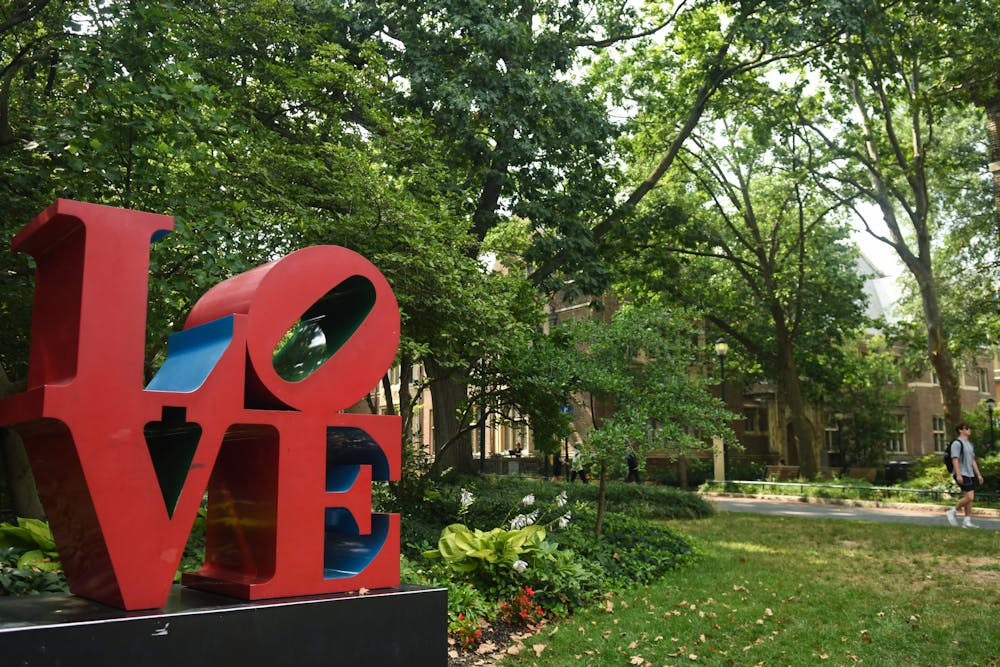In the wake of the Supreme Court's rejection of affirmative action, Penn community members spoke with The Daily Pennsylvanian about the implications of the decision for both Penn admissions and college admissions as a whole.
On June 29, the Supreme Court ruled against affirmative action — the race-conscious admissions practices used by universities across the country — overturning decades of legal precedent. In a 6-3 ruling, the Court decided that the consideration of race in admissions violates the Equal Protection Clause of the 14th Amendment for any colleges and universities that receive federal funding, according to the Associated Press.
Although unsurprising to many in the Penn community, this decision makes the future of University admissions unclear.
In a statement released soon after the decision, the Asian Pacific Student Coalition at Penn denounced the ruling, pointing to the hurdles it poses for applicants from marginalized groups.
“It is an undeniable fact that barriers to education — both historical and continuous — exist in the United States, thereby preventing marginalized communities from accessing higher educational opportunities crucial for socioeconomic mobility,” the statement said.
Rising College sophomore and Social Chair of Natives at Penn Nikolai Jawiyuga Curtis agreed, describing the decision as “incredibly disheartening.” A week prior, the Supreme Court had upheld Native American adoption preferences, and Curtis recalled the rapid shift from “celebrating” to feeling “devastation and setback from this decision.”
Rising Wharton senior and UA President Xavier Shankle also pointed to the harm the decision poses for students and applicants of color.
"We must ensure that the Supreme Court's decision does not undermine our progress in pursuing racial equity in higher education," Shankle wrote in a statement to the DP.
Federal investigation finds that former Penn professor engaged in research misconduct
A 'broken' system: Penn students, professor reflect on student loans following Supreme Court ruling
Virginia Richards, a second-year University of Pennsylvania Carey Law student and co-advocacy chair of the Black Law Students Association at Penn, said that affirmative action had not yet been able to achieve racial equity in higher education.
“It's kind of a slap in the face to say that even this bare minimum policy that helped increase numbers is too much,” she said.
Richards also drew a parallel between the June 29 decision and last year’s decision in Dobbs v. Jackson Women's Health Organization, where the Court ruled that abortion was not a protected right under the Constitution.
“It seems as though there's a concerted effort to go back on many rights and privileges that marginalized people in this country have been enjoying and under legal precedent that has existed for decades,” Richards said. “This Supreme Court seems hell bent on rolling back those protections."
Penn Carey Law professor Kermit Roosevelt echoed this sentiment, attributing the ruling to the changing composition of the Court. The conservative majority was able to overturn affirmative action, which he says is something “they’ve been trying to do for 40 years.”
GSE History of Education professor Jonathan Zimmerman stated that while he was disappointed by the ruling, it might provide an opportunity to make Penn more socioeconomically and ideologically diverse.
“Affirmative action did promote diversity, but it promoted diversity of skin tone, not diversity of social class,” he said. "It brought in more people that didn't look like each other, and that's a good thing — but most of those people, regardless of their skin color, are rich or fairly rich.”
In a column for The Philadelphia Inquirer, Zimmerman argued that the diversity offered by affirmative action is incomplete, pointing to a statistic that students from families in the top 1% of the income bracket were 77 times more likely to be admitted to an Ivy League school than people whose families earned less than $30,000 a year.
Penn community members also shared concerns about the ambiguous nature of the decision’s wording.
While the decision prevents universities from taking race into account as a specific factor, admissions officers are allowed to consider an applicant's "discussion of how race affected his or her life" as long as they look towards individual experiences and refrain from making decisions on a racial basis, according to the majority opinion by Chief Justice John Roberts.
The uncertain language of the decision opens the door to further litigation, according to Roosevelt, especially regarding what counts as a “race-neutral measure.”
“The ambiguity in the language is going to lead to admissions offices across the country to err on the side of caution and try to underutilize race as a factor in admissions,” Richards said.
Chioma Uba, a second-year student at Penn Carey Law and co-president of Penn BLSA, criticized this condition regarding the appropriate use of race, describing it as a method to push students of color to "exploit their hardships for the sake of getting into these schools."
Historically, schools without race-conscious admissions policies have struggled to create diverse incoming classes. According to a study from the American Educational Research Association, there are persistent declines in the share of admitted and enrolled students belonging to underrepresented groups at universities in states that have previously banned affirmative action in public higher education. The study concluded that alternative policies and administrative decisions were “unable to fully replace race-based affirmative action."
Roosevelt predicted that a replacement solution will be more expensive and require more individualized essay reading as a result of the decision, meaning that Penn and other schools with large endowments may have more success at maintaining diversity, so long as the desire to have a diverse student body persists.
Penn President Liz Magill and Provost John Jackson Jr. released a statement the day of the ruling suggesting that Penn's commitment to diversity will not change.
"In full compliance with the Supreme Court’s decision, we will seek ways to admit individual students who will contribute to the kind of exceptional community that is essential to Penn’s educational mission,” Magill and Jackson wrote in the statement.
The same day, Dean of Admissions Whitney Soule released a blog post about the decision.
"We will need to review and revise our practices to ensure that we are fully compliant with the law. What will not change is our commitment to creating a diverse community as central to the educational experience at Penn," she said.
Penn Admissions has not formally addressed how the ruling will affect the admissions process or applications from prospective students. The admissions office did not respond to the DP’s request for comment.
“If Penn wants to put its money where its mouth is, they should hire someone specialized in seeking out diverse candidates,” Richards said. “That creates a pipeline to bypass the race conscious admissions issue, while still remaining in compliance with the decision.”
Curtis agreed that the University needs to take a more aggressive approach. He proposed new ways that Penn could reach out to the Native American community, including attending tribal events such as powwows or stomping grounds.
Uba said that the ruling will have long standing impacts on universities' ability to cater to the needs of society and develop productive professionals.
"This [decision] will have major blowback, not just for individual students when it comes to admissions, but society as a whole,” she said.









